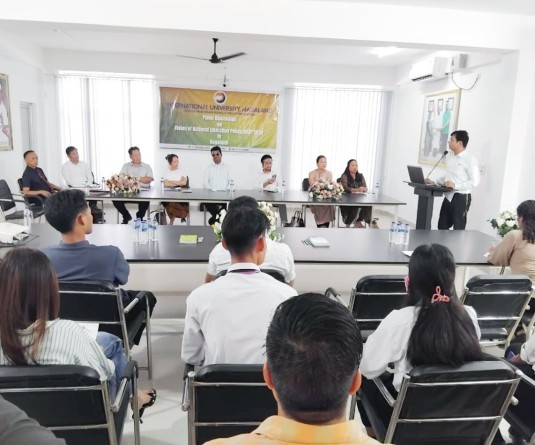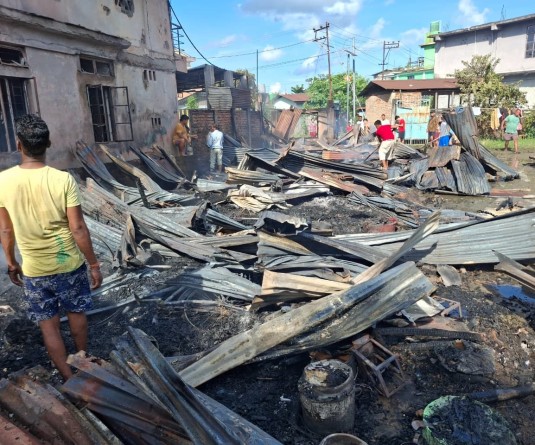Participants and dignitaries during the celebration of 25 years of conservation at Khonoma Nature Conservation and Tragopan Sanctuary on December 12. (Morung Photo)
25 years of conservation at Khonoma Nature Conservation and Tragopan Sanctuary
Morung Express News
Khonoma | December 12
Introducing the concept of conservation to a people whose livelihood was directly dependent on nature was an enormous task, stated Kezhaseria Meyase, Chairman, KNCTS while recalling the formation of the Khonoma Nature Conservation and Tragopan Sanctuary (KNCTS), that reached a significant milestone today and observed 25 years of its conservative efforts of wildlife and sustainable living at Terhotsiese in Khonoma village.
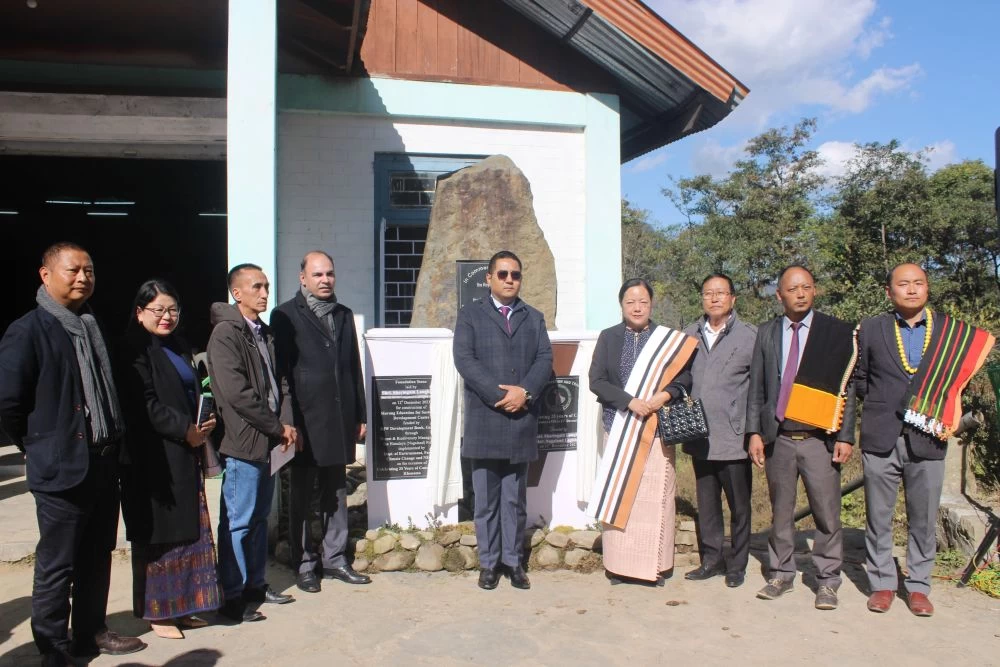
Established on December 11, 1998 under the motto, ‘Care for nature’ and covering a total area of 123 sq km including a core sanctuary of 20 sq km, KNCTS was conceived and initiated by a few conservation-conscious people. During its formative years, the Chairman said, KNCTS was faced with stern opposition wherein some even made a mockery of the radical idea of conservation and labelled it as “too idealist” for curtailing the livelihood of several people, and that, it took years to convince, sensitize and educate the people.
Meyase, however noted that, “a community that takes a U-turn for a sustainable living from all the activities that transgress the law of nature is by far promising and rewarding” while citing some of the significant recognitions of Khonoma village, which was also labelled as the first Green village in India in 2005. The village is also a recipient of foreign funds (Gerald Durell Memorial Fund); recognition from BNHS, 465 important bird area in India, recipient of National Bio-diversity Award 2021 and upgrade programme by UNWTO 2023.
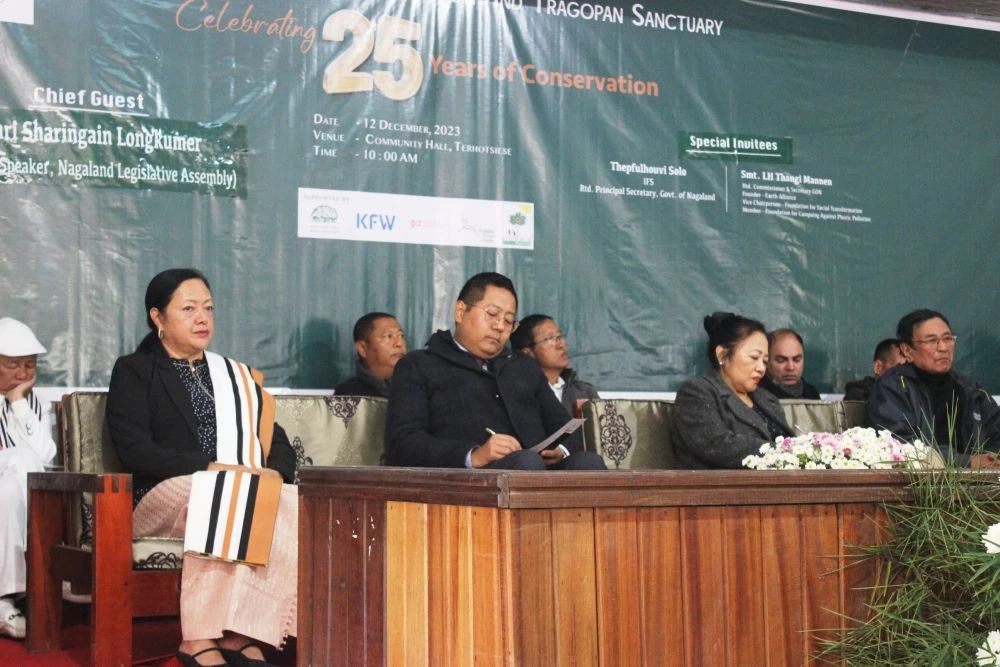
He also asserted that the credit of their success story has always been “the community involvement by engaging the various organisations in the village which have equal representation from each khel and clan, equal benefit sharing, transparency and accountability are the hallmarks of this successful conservation.”
Despite the challenges encompassing arrangement of alternative livelihood to many families whose livelihoods are narrowed down by the impact of conservation, or compensating the loss of crop and livestock (Man Animal conflict) and poor documentation and databasing information of its rich biodiversity, he underscored that 25 years of community conservation is a moment to celebrate and retrospect the past and also to move forward.
Khonoma, he highlighted, is a historical village with more than 500 years of existence, wherein many traditional practices are still intact. The conservation journey and potential of the rich biodiversity also serve as a knowledge reservoir for scholars, research and nature enthusiasts and lovers, he further noted and affirmed that, “the community endeavours to pass on a clean legacy for future posterity, and also spread the message of community conservation far and wide.”
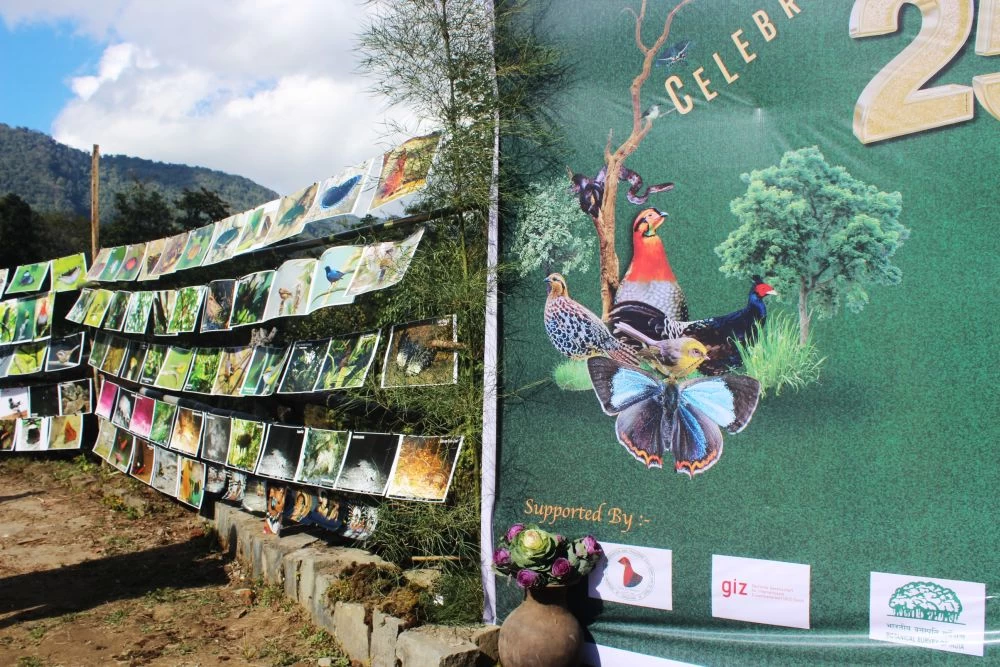
‘Important to make Sustainable Development relevant to people’
Addressing the 25 years of conservation, Sharingain Longkumer, Speaker of Nagaland Legislative Assembly saluted the people of Khonoma for putting their wisdom and collective decision to take collective responsibility while commending their efforts and the years of awareness to have come this far. He said that the contributions of the people of Khonoma since statehood till today has been immense and in this regard, urged the community to continue in the same spirit by relentlessly putting in their efforts.
He also drew parallel comparisons of his native village, Ungma under Mokokchung district and Khonoma, both of which have rich resources particularly in terms of providing stones to their respective districts. The similarity, he pointed out, “may be a challenge when it comes to conservation of wildlife and sustainable development because our economy relies on the raw materials that we provide for further development.”
Longkumer further encouraged the elders and the people of Khonoma to be proud of their efforts in establishing the sanctuary while expressing that, “it speaks volume of your concern and dedication and your efforts in conserving not only the forest but the wildlife.” He also underscored that it is very important to make a subject matter such as Sustainable Development relevant to the people at the village and block level, as well as at the individual capacity and to utilise maximum utilisation sustainably on the resources. Towards this end, he congratulated Khonoma for starting such a movement and for the marvellous achievement.
Also speaking on the occasion, LH Thangi Mannen, retired Commissioner & Secretary GoN who played a pivotal role during the formative years of conservation in Khonoma, expressed happiness to see the fruitful outcome of the conservation efforts while recalling that two decades back, eco-tourism was an absolutely new concept while also commenting that tourism is not about high rise buildings, but about village life.
Stating that it took a long time for people to understand that, she further recalled the initiatives undertaken in this regard over the past 20 years and expressed happiness that what started as a people’s movement and initiative has now evolved into a sustaining activity. She also said that if everyone behaved like Khonoma, and respect and conserve nature, the world would be a better place.
Khonoma, she added, has shown the way not only to the people of Nagaland but the world while congratulating them for their conservation efforts and exuded hope that they would continue to be the torchbearer of Nagaland.
Located at the foot of beautiful craggy mountains, exquisite alpine valley of green pristine forest of oaks and 7 kinds of rare endemic Rhododendrons, Khonoma has one of the best temperate natural habitats of rare Blyth Tragopan bird, the WW II has completely wiped out of the Zoos in Europe.
In the words of Thepfulhouvi Solo, IFS Retd, Principal Secretary, Government of Nagaland, who was also instrumental in the formation of KNCTS, recalled how he interacted with several key people for establishment of the world’s first Tragopan Sanctuary in Khonoma area since 1983 and said, “it took me 7 years of repeated off-and-on discussions with various elders and anyone who mattered in Khonoma village including my wife’s relatives.”
Stating that finally, Late Tsilie Sakhrie, the then Chairman of Khonoma Village Council guided his villagers, he related that, “after more than 7 years, the villagers, at first stiff-neck, gave their written decision to control hunting of animals and birds in their jurisdiction.” A minute’s silence was also observed in the memory of Late Tsilie Sakhrie, who, Solo described “was the dynamo of energy for the preservation of wildlife in Khonoma.”
Earlier, the NLA Speaker unveiled the Jubilee Monolith and Foundation Stone of Morung Education for Sustainable Development Center. Highlights of the event included invocation by Rev. Tsolie Chase, Sr. Pastor, Baptist Church, Khonoma; welcome address by Salhoutuonuo Kruse, Minister for Women Resource Development and Horticulture; folk song by Khonoma Youth Organisation; vote of thanks by Neikedolie Hiekha, Convenor, Organising Committee; and benediction by Kedoheto Peter Meru, Catechist, St. John the Evangelist Church, Khonoma.
Huzo Meru, Director of Operations, North East Christian University led the programme and Keneivito Sophi and Vimesano Meyase were the comperes. Among those who attended the programme included Dr Kekhrie Yhome and Kevipodi Sophie, and several organisations including members from KfW, NEPED, NIEDA, etc.


